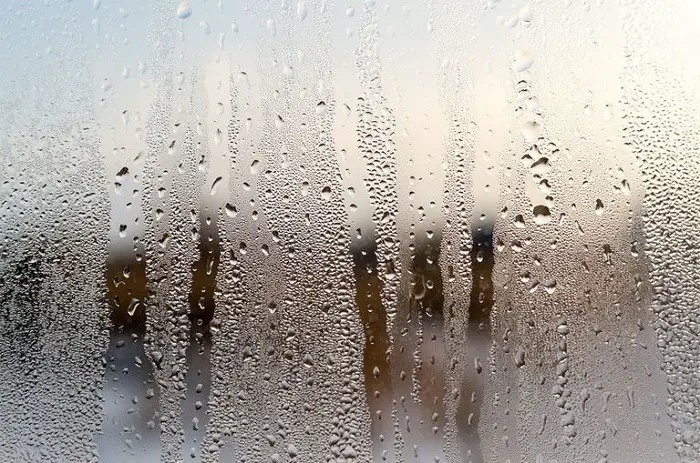What Causes Moisture in a House (These Factors Will Surprise You)
There are a lot of different sources that bring moisture into a house. Of course, many of them you cannot get rid of but you can take actions to reduce it. What causes moisture in a house are animals, plants, and certain activities.
If you are allergic or have anyone that is allergic in the house, the moisture becomes an even worse problem. Now, as with any problem, to find a solution you have to know the cause. This is the best way for you to get rid of it.
Now, before we get more detailed into the problem, some of the causes of moisture in a house are not possible to get completely rid of such as people. That is right. You are one of the sources of moisture in a house. Before you get desperate though, thinking that you should kick everyone out of the house, including yourself, relax.
You have to understand that moisture is basically water diffused as vapor that makes the humidity levels in the house skyrocket. This causes certain problems such as mold.
For those health problems that come from an elevated moisture level in a house, you should be concerned. Once you understand what causes the moisture, you should take actions toward reducing it in your house.
To put it simply, what causes moisture in a house is the “agents” that bring water into the household. Those “agents” increase the level of moisture which then increases the humidity in a house.
Now, if you are wondering if there is really any problem with having uncontrolled humidity levels in your house, yes there is. Humidity makes your house inviting to bugs and mold.
This creates a not-so-hospitable place for you and your family. So, for all of those reasons, you must know the causes of moisture in your house. Below, we go more into detail about each one of the sources.
As mentioned, some of them you cannot control and some of them you can. Either way, you can always make it better. As you are going to see, the best way to fight this is to have counteractions that help turn the situation into a manageable problem.
People
People are one of the main sources of moisture in a house. Besides the fact that we are composed mainly of water, therefore, we have quite a lot of bodily fluids, we distribute water, which increases the moisture levels, mainly through breathing.
Now, there are other ways that we produce water and exchange it with the environment. This happens through metabolic processes such as respiration and perspiration.
On average, people tend to contribute 1.25 liters of water to the moisture of a household. If you live with 4 or more people, the math can really add up. Of course, there is not much you can do about it.
Animals
Pets are another source of moisture in a house. Like humans, they mainly contribute through metabolic processes and breathing. Of course, the amount of water will depend on what kind of pet you do have.
Now, before you start to think that you and your pets are the biggest sources of moisture in your house and that the solution is to live in the wild, it is not like the amount of water produced by humans and pets are as significant as other controllable sources.
Still, it is good to know that you cannot get completely rid of the sources of moisture in a house neither would you want to since that would make the environment really dry, which is also not good.
Plants
Plants are another source of moisture. Still, their contribution to the environment and nature, in general, is worth having them. They also send water to the atmosphere, which interferes with the humidity of the room.
This can be good to not make the room too dry, but you have to be aware of how many plants you do have in a given room. This is because too many plants will make the place a little too cold.
Of course, the best solution here is to control the number of plants you have in a specific room and to also reduce the number of plants you have if that is an option for you.
Cooking
Finally, we are in a more controllable source of moisture. Cooking contributes to the party on many levels. First, basically, every food will have water in it and will eliminate some of it while you are preparing the dish.
This water, many times, attaches itself to the walls and later goes to the air of the house. Depending on what you cook and the frequency that you cook, it can become a real thing, messing up with the moisture levels of your house.
Since not cooking or cooking less is not an option for 99% of people and even if it was, you would not want to not be able to cook in your own house when you want to, you can use some tricks such as opening the windows or using an exhaust hood above your stove.
Water Leaks
This is the most obvious culprit when it comes to moisture in a house. First, they clearly mess up with the humidity. Secondly, after you notice them is quite common to see mold. Thirdly, it is water.
Water leaks not only mess up with the house’s infrastructure but it also messes up with the moisture levels. All that water does not remain on the walls. It goes straight to the air and makes the room humidity go up.
This is the perfect invitation for bugs and mold. So, the best you can do in this situation is to fix the leak, obviously. Now, if you do not know how to do it, hire a professional. It is crucial that you do get rid of water leaks.
Showers and baths
Another culprit that sounds quite obvious when you think about it but it is not as obvious at first. Showers and baths are great sources of moisture in a house. Just notice how the walls in the bathroom get after you shower, especially if it is a hot one.
Now, the best you can do to not have to reduce the number of showers you take is to have a system to get rid of that water. We will explain more below. For now, what you need to know is that baths and showers are a cause of moisture.
If you go right now to your bathroom, you are going to realize that it is the coldest room in your house. This is because the humidity level is quite high in there because of the water of showers and baths.
Drying Laundry
Drying laundry outside of a clothes dryer is a great source of moisture. This happens because all that water has to go somewhere after it leaves the clothes. It goes straight into the air of the room, making the humidity level go up.
If you get your laundry to dry inside a confined space in your house, it gets even worse. When you do that, the water accumulates in the air with no outlet. So, if you do it outdoors, it is a little better.
The best way to counteract this is to get a clothes dryer or do it outdoor. Obviously, that is not always possible but if you can it is a great way to reduce and even get rid of a lot of moisture in a house.
Weather
The weather causes a lot of moisture in a house. This one is a little frustrating because you cannot control the weather but is still important to mention. We get so caught up with trying to get rid of moisture that sometimes it is important to remember that we cannot do that entirely.
Obviously, a house with high humidity levels is not good. It gets too cold even in the summer. It attracts bugs and molds. If you are allergic, it is even worse. Still, it is important to keep in mind that some seasons will cause more moisture in your house than others.
So, as much as you try to figure out the cause of moisture in your house, a lot of them will be beyond your control. Once you understand that the best solution is not to get rid of those causes but actually to have counteractions for them, the closer you will be to having a pleasant environment in your home.
How to counteract
So, of course, we would not leave you without telling you what you can do about it. The best counteraction for moisture is to have an efficient ventilation system in your house.
Especially in your bathroom and in your kitchen. If you can, have vent systems throughout the whole household. They will make sure the humidity levels are in check and all that water is going out of the house.
Another alternative is to use a dehumidifier. You want to use it to reduce the moisture in your house to an ideal 30 to 50 percent humidity. A dehumidifier reduces the moisture in the air and thus reduces the number of allergens, dust mites, mold, and mildew. To purchase the right one, you need to have two pieces of information. first, you need to know the square footage and second, the amount of the humidity of the area you need to be covered. To measure the moisture, you need to get a Hygrometer (Click Here to get one from Amazon).
Once you are able to measure the amount of moisture, use the following to determine the level of humidity for the space:
- 50% to 60% Humidity (Slightly Damp with Occasional Musty Smell)
- 60% to 70% (Moderately Damp and Often Smelling Musty)
- 70% to 85% (Very Damp, Feels Wet, Wet Spots on the Walls/Floors and Smells Musty)
- 85% and Above (Wet with Seepage on Walls/Floors, Mold/Mildew Appearing)
Depending on your square footage, you will need to get the appropriate unit that takes out the right amount of moisture from the air. So for instance, a 300 sq. ft. room may need to remove 30 (60% humidity) to 45 pints (90% humidity). A room size of 1500 sq. ft. may need to pull 70 (60% humidity) to 90 pints (90% humidity) of water out of the ambient air.
There are many humidifiers on Amazon to choose from. I recommend the following dehumidifiers (from Amazon):
- 30 Pints up to 3oo sq.ft. Unit (Click Here)
- 45 Pints up to 500 sq. ft. Unit (Click Here)
- 60 Pints up to 4000 sq.ft. Unit (Click Here)
Final thoughts
So, now that you know what causes moisture in a house and that the best you can is to have a vent system that gets rid of all that water, you can better work around the problem. You can also create a healthy and pleasant environment for you and your family.
Now, do not forget to share this article and leave a comment below.

